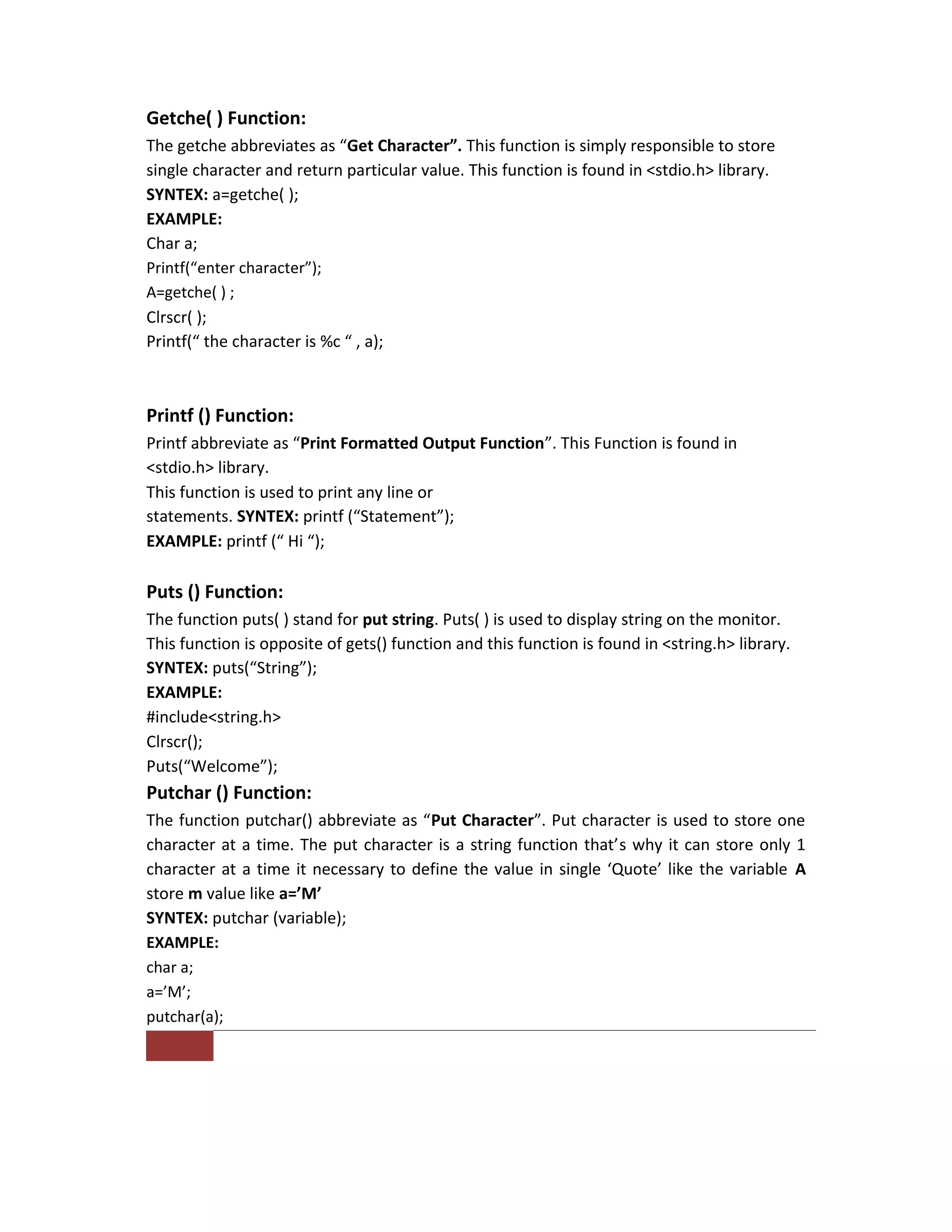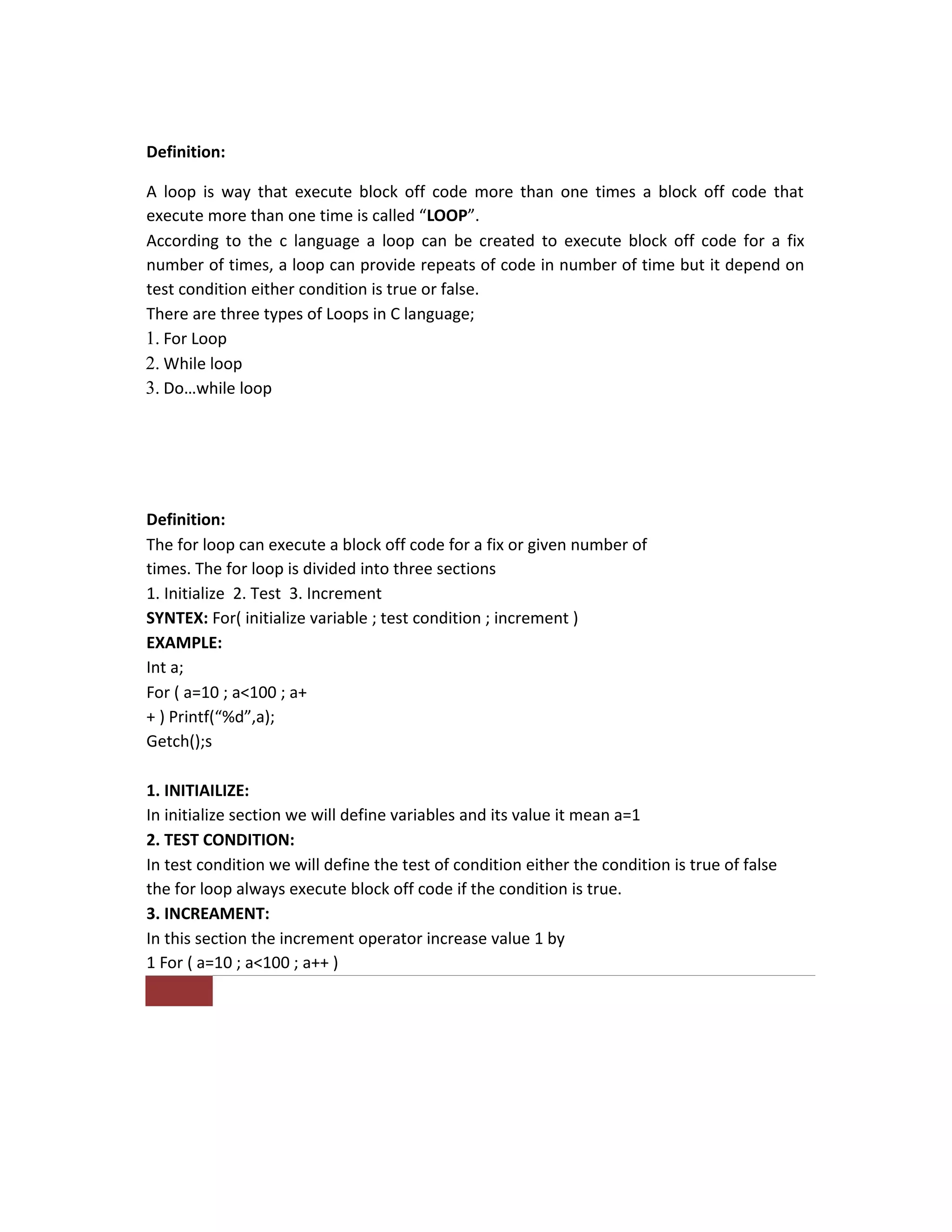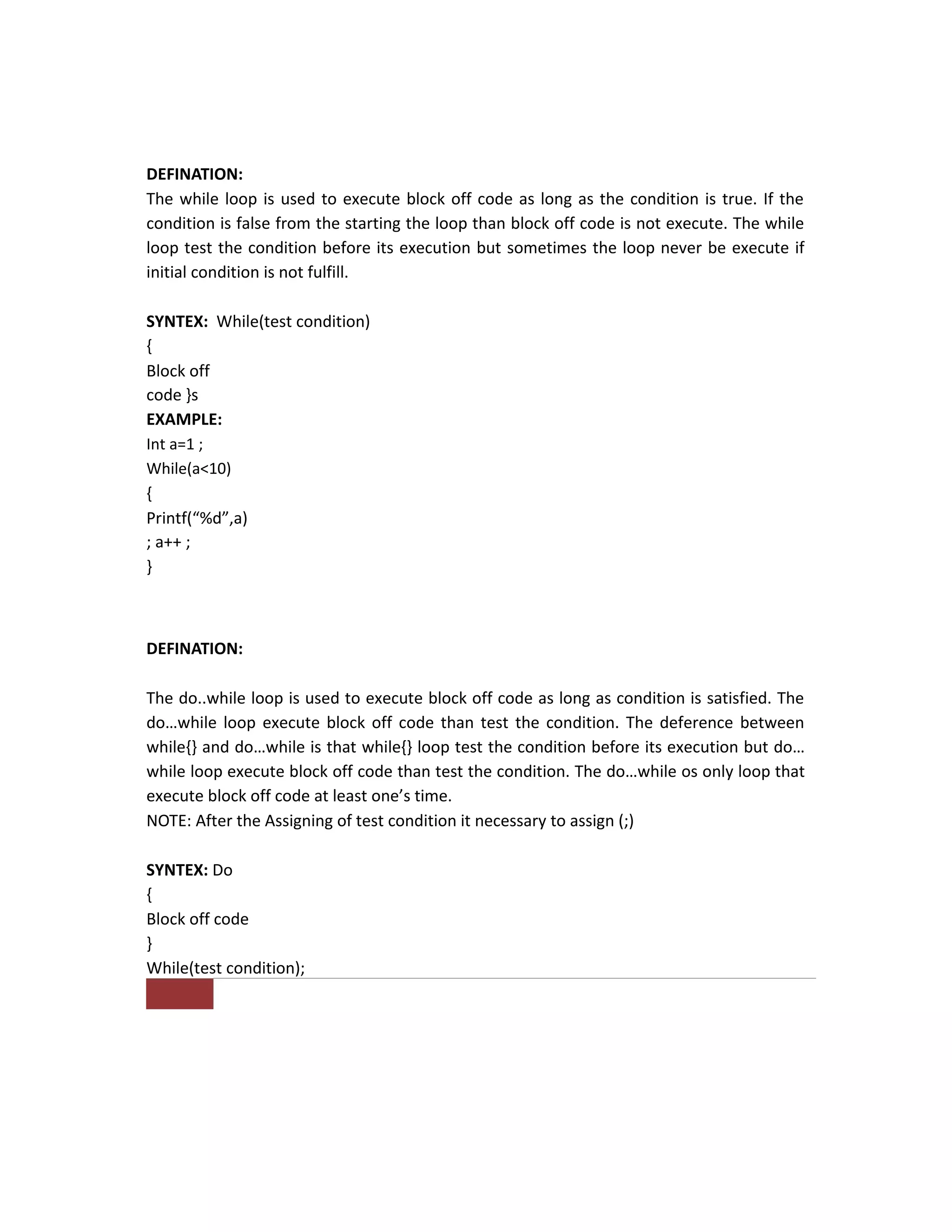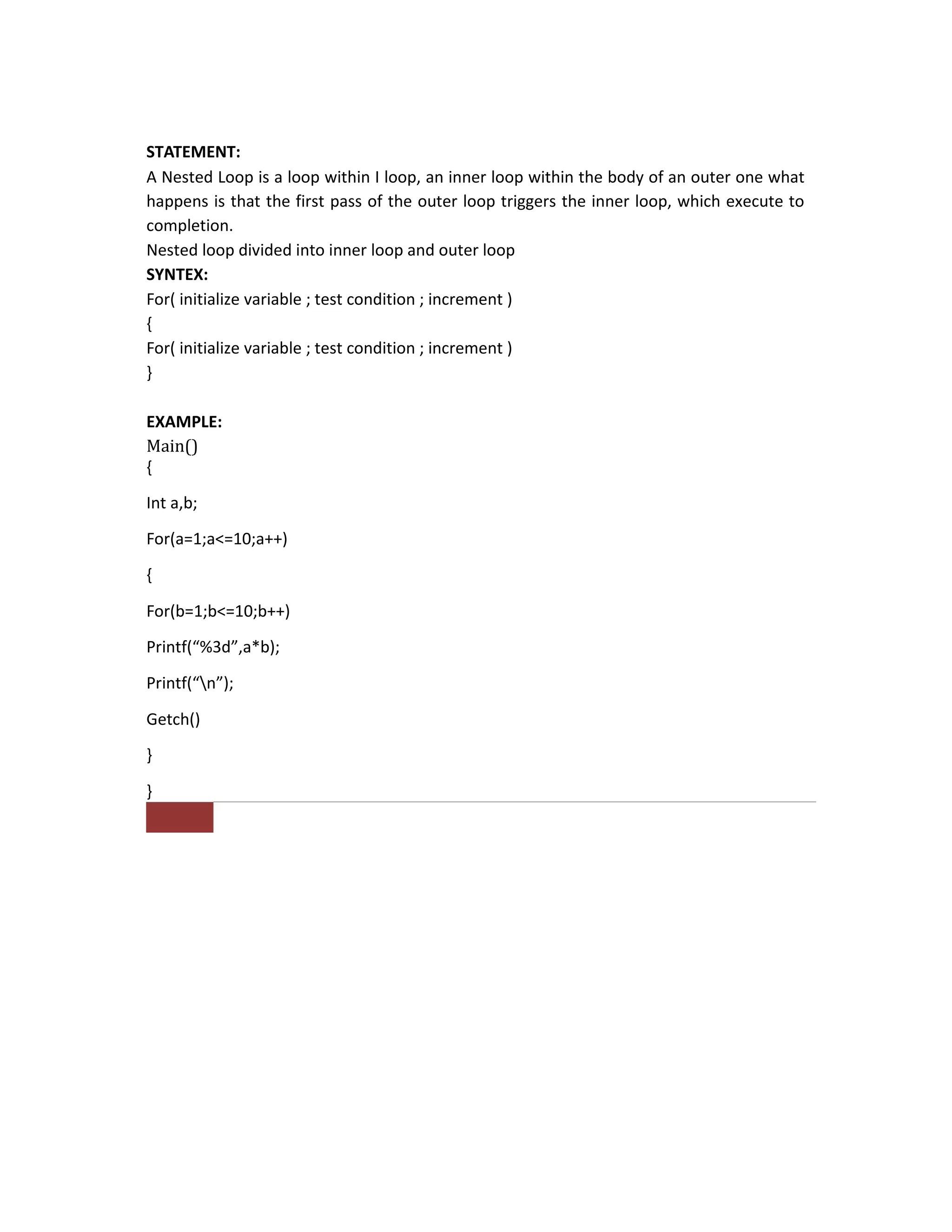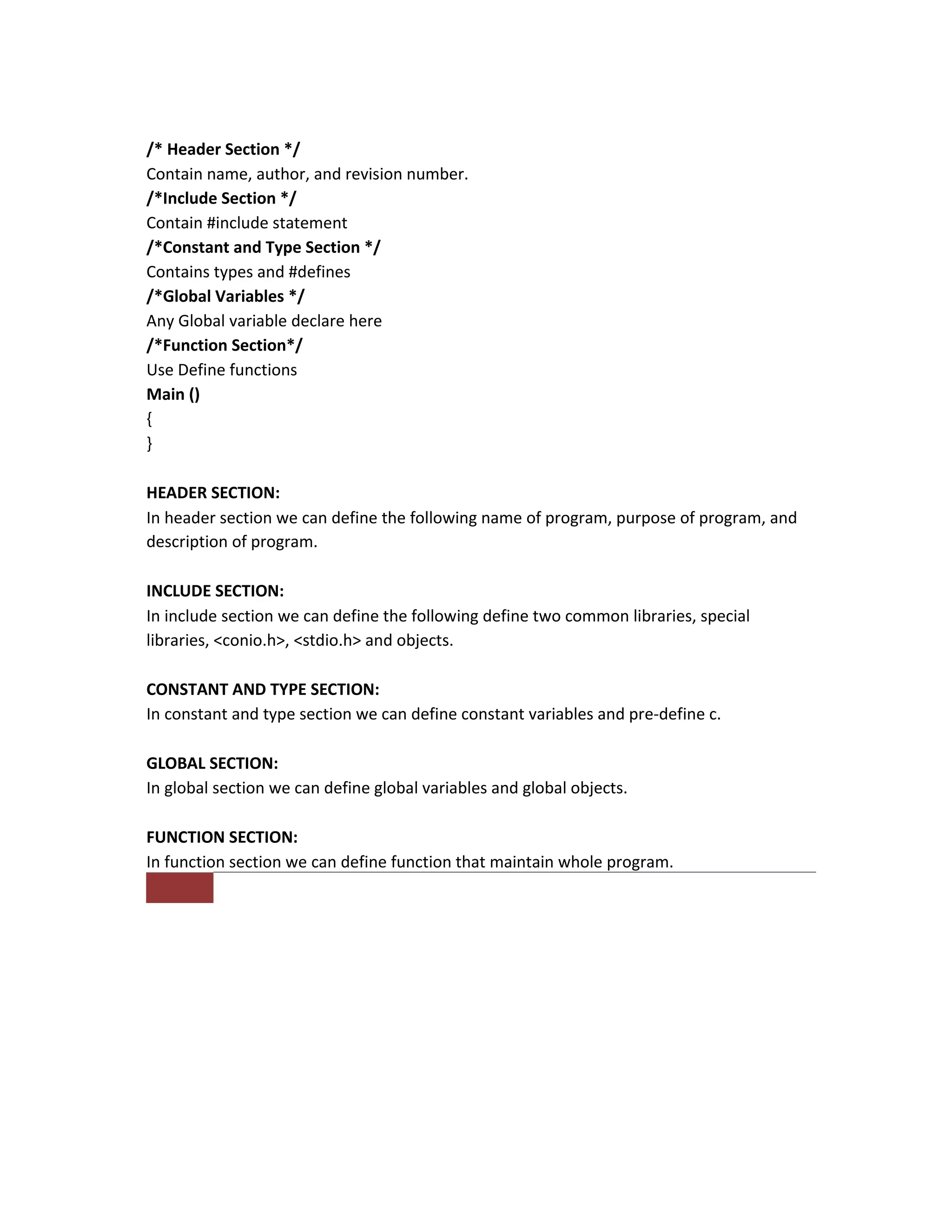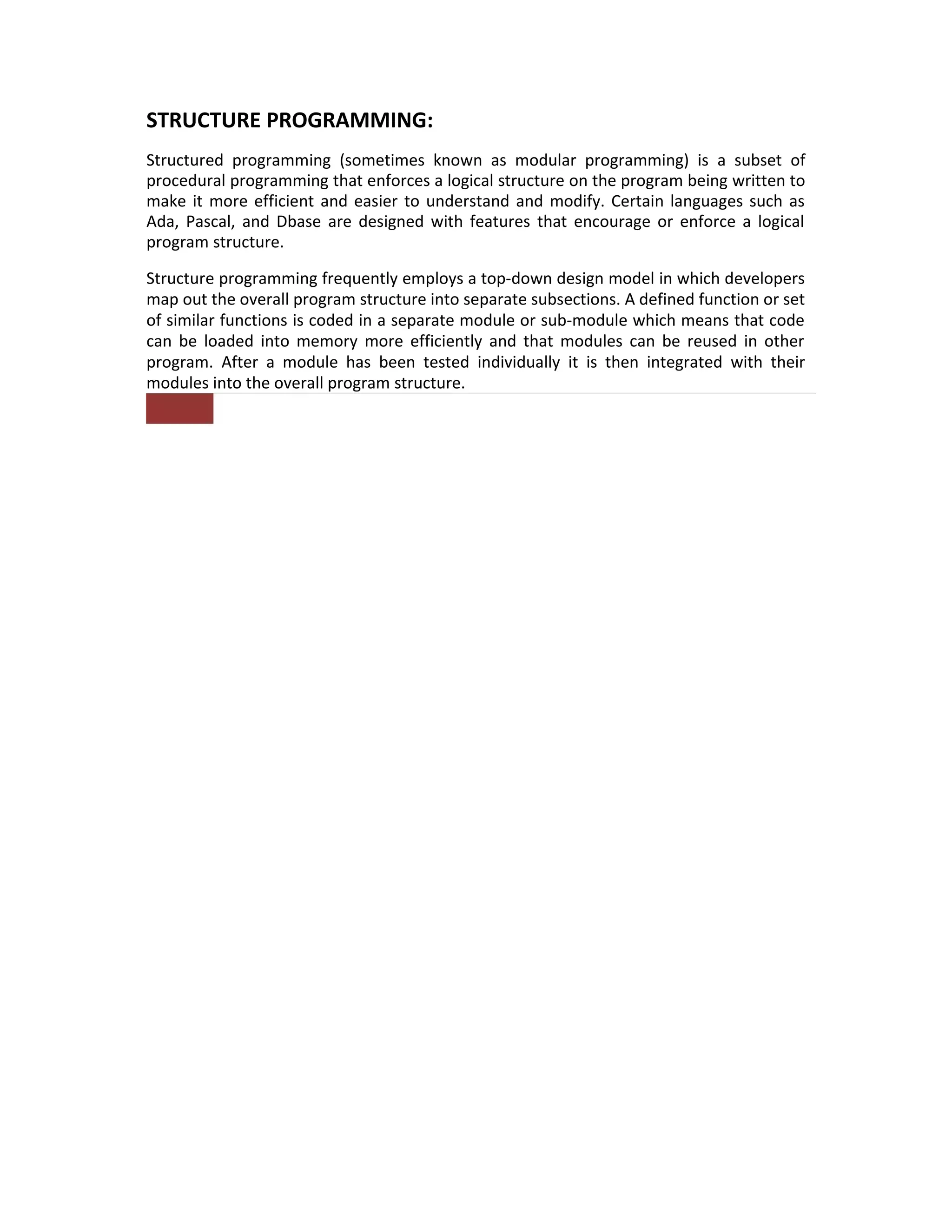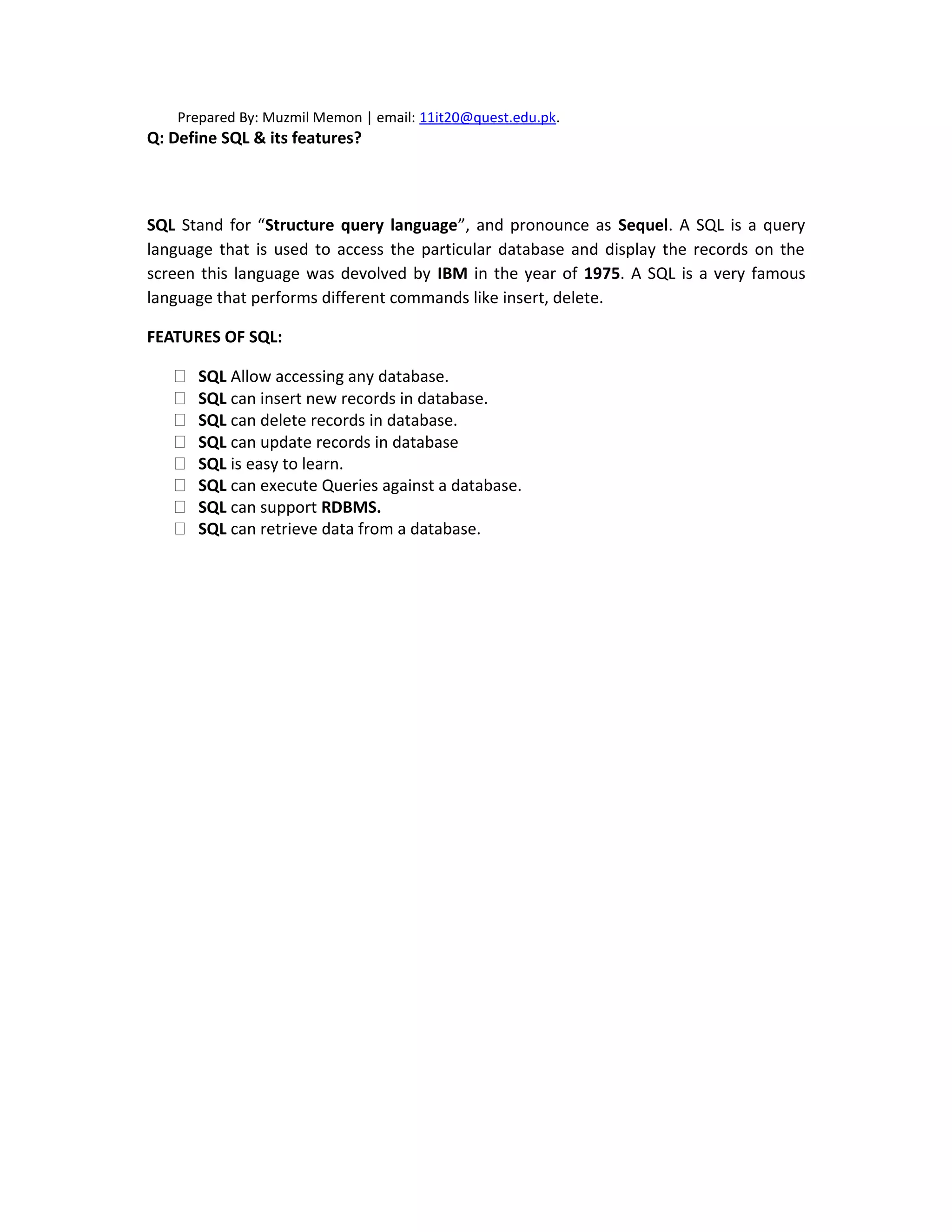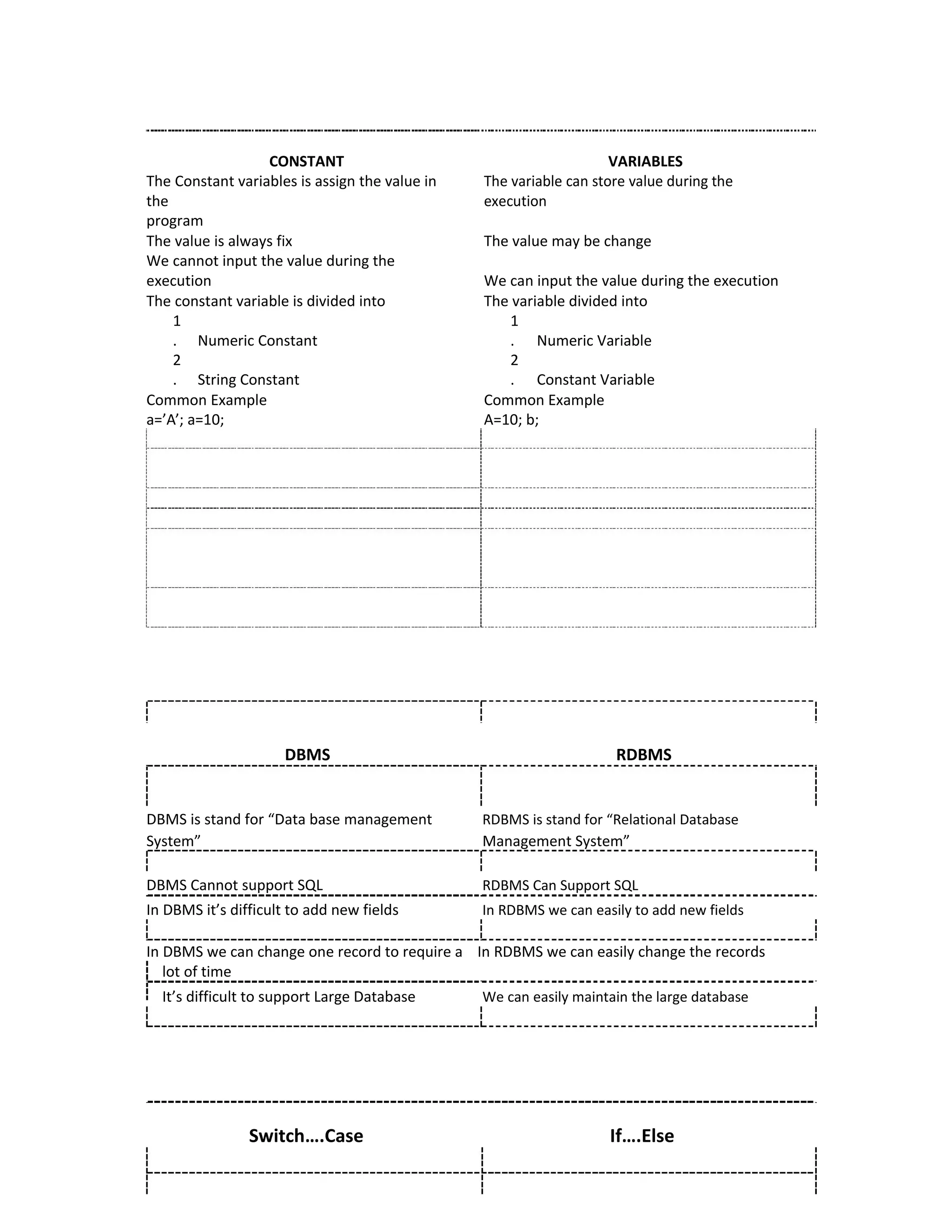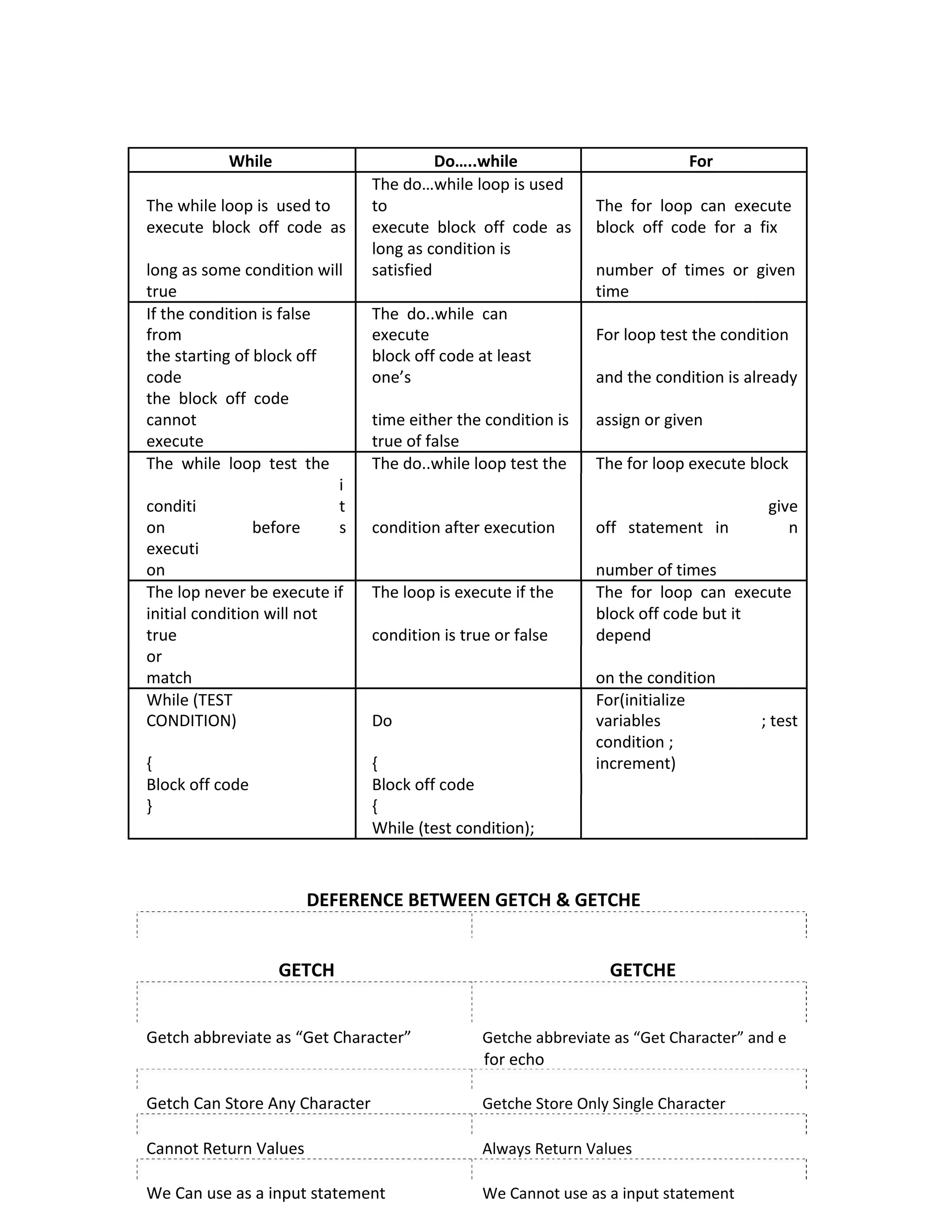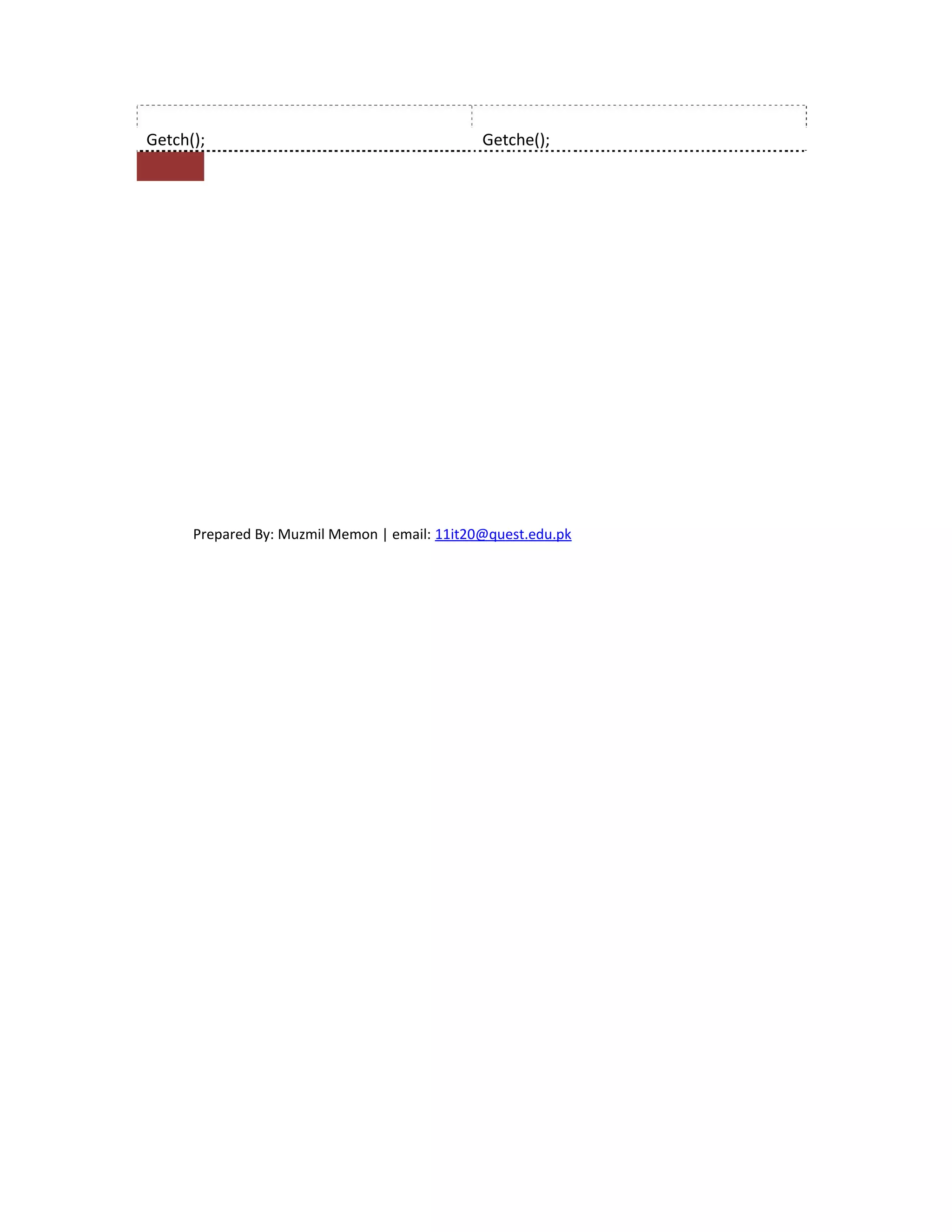The document provides an overview of the C programming language and some key concepts related to it. It discusses C as a programming language developed in 1972, its features such as being case sensitive and supporting libraries and functions. It also defines some common C terms like header files, IDEs, keywords, variables and data types. Loops such as for, while and do-while loops are explained along with input/output functions like printf, scanf and control structures in programming.
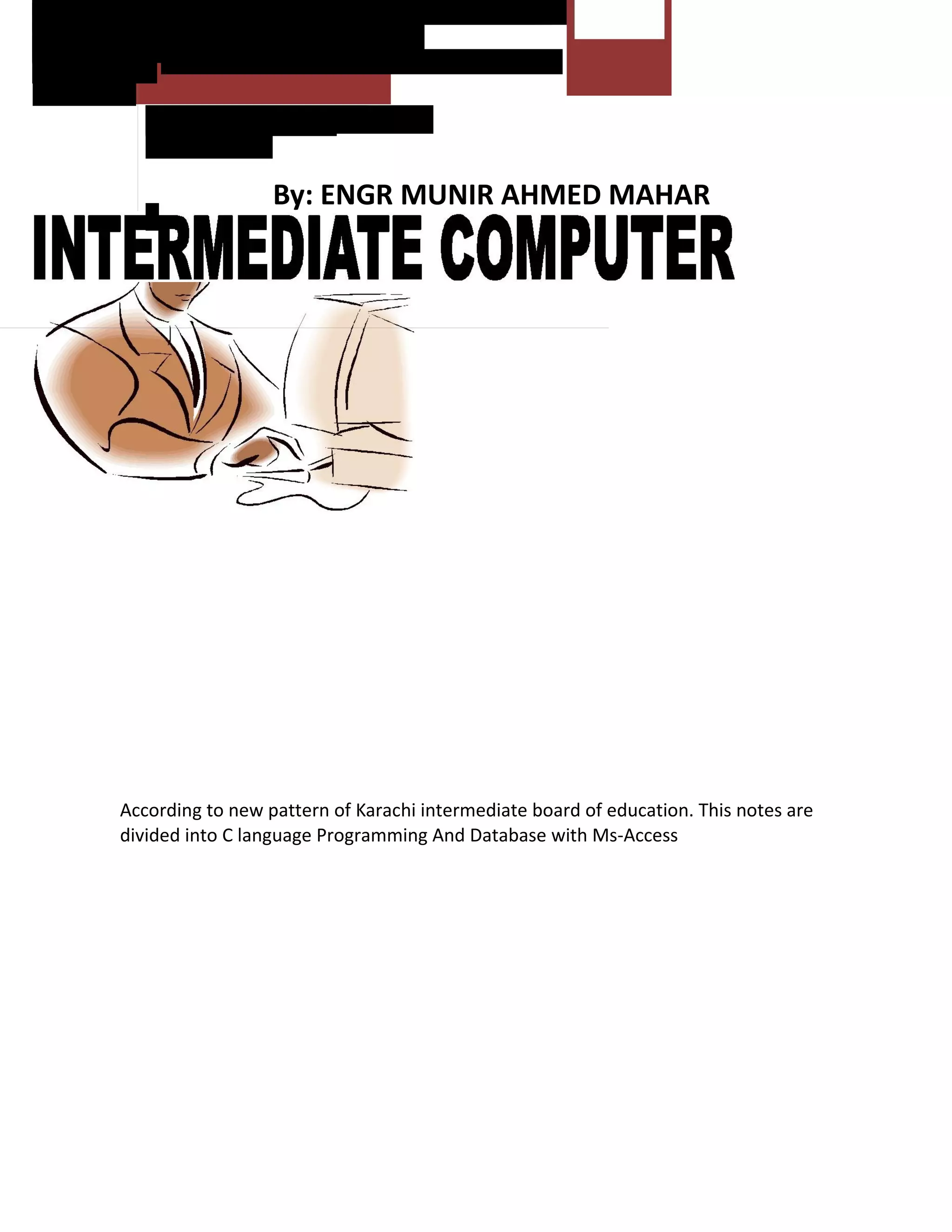
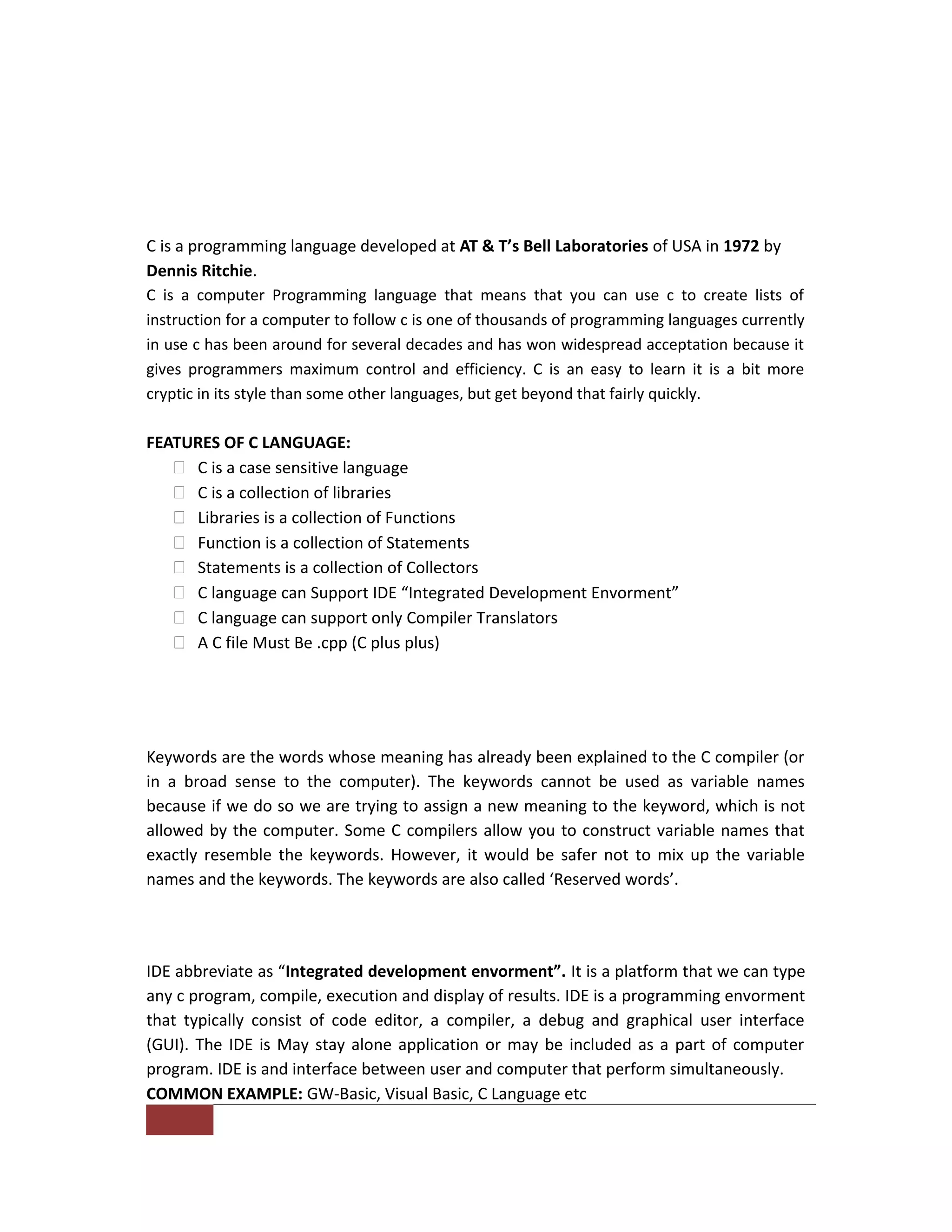

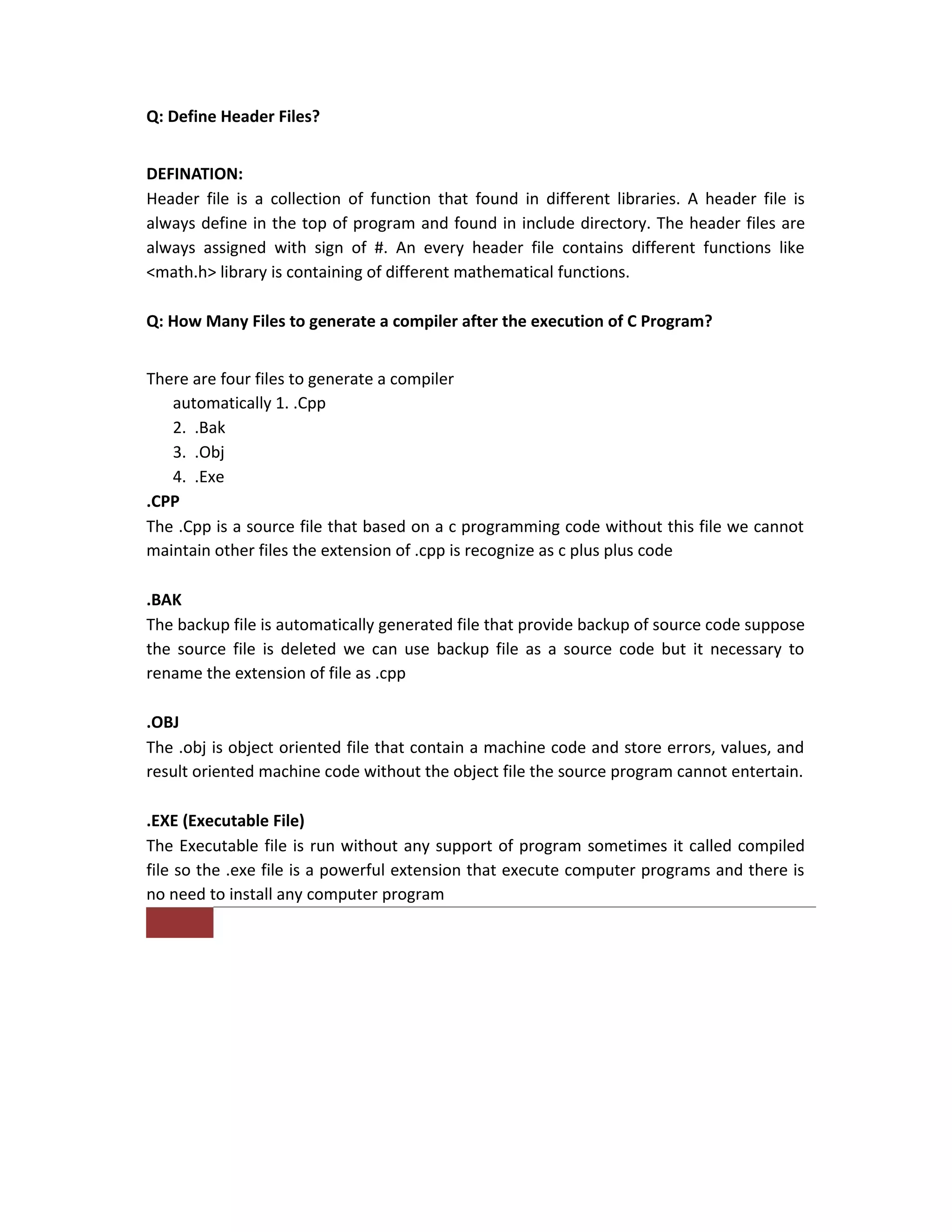

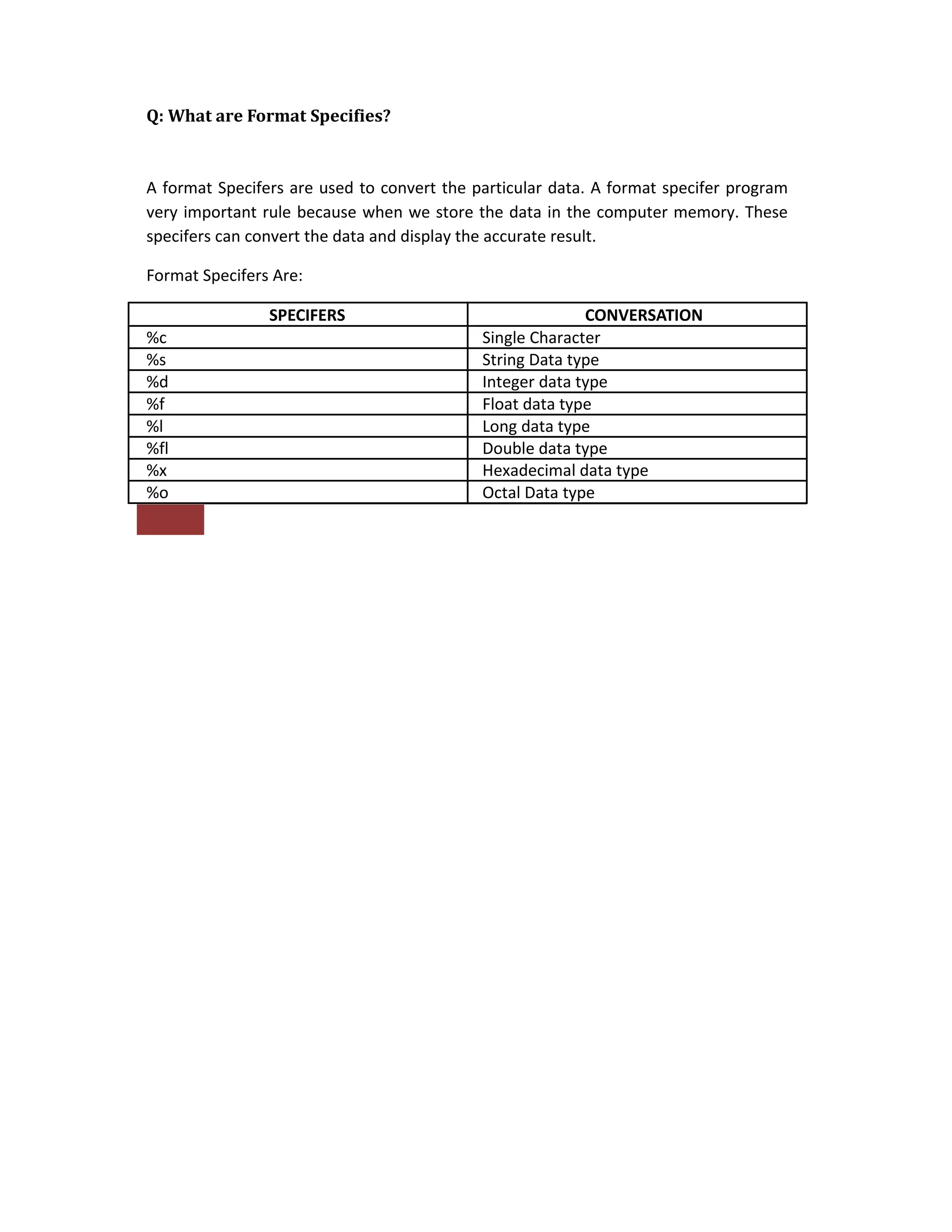







![Q: What Are Data Types?
DATA TYPES:
Data types are use to store which type of data stored in the variables. Data types are
always identifying by their name, data types is a computer memory location that store
data. Data types are always define in the beginning of computer program. There are
various data types used in c language but major are,
INTEGER DATA TYPE:
Integer data type is use to store sure numeric value. Integer data type is capable to store -
32768 to 32767 and accommodate 4bytes
SYNTEX: int a;
CHARACTER DATA TYPE:
Character data type is always store string value and occupies 2 bytes and store 0 to 255 at
a time
SYNTEX: char a[30];
FLOAT DATA TYPE:
Float data type is used to store numeric value with decimal places. A floating data type
always reserved 4 bytes with the range of 0 to 2.4e
SYNTEX: float a=10.2;](https://image.slidesharecdn.com/munirmahar-161210184954/75/over-all-view-programming-to-computer-14-2048.jpg)
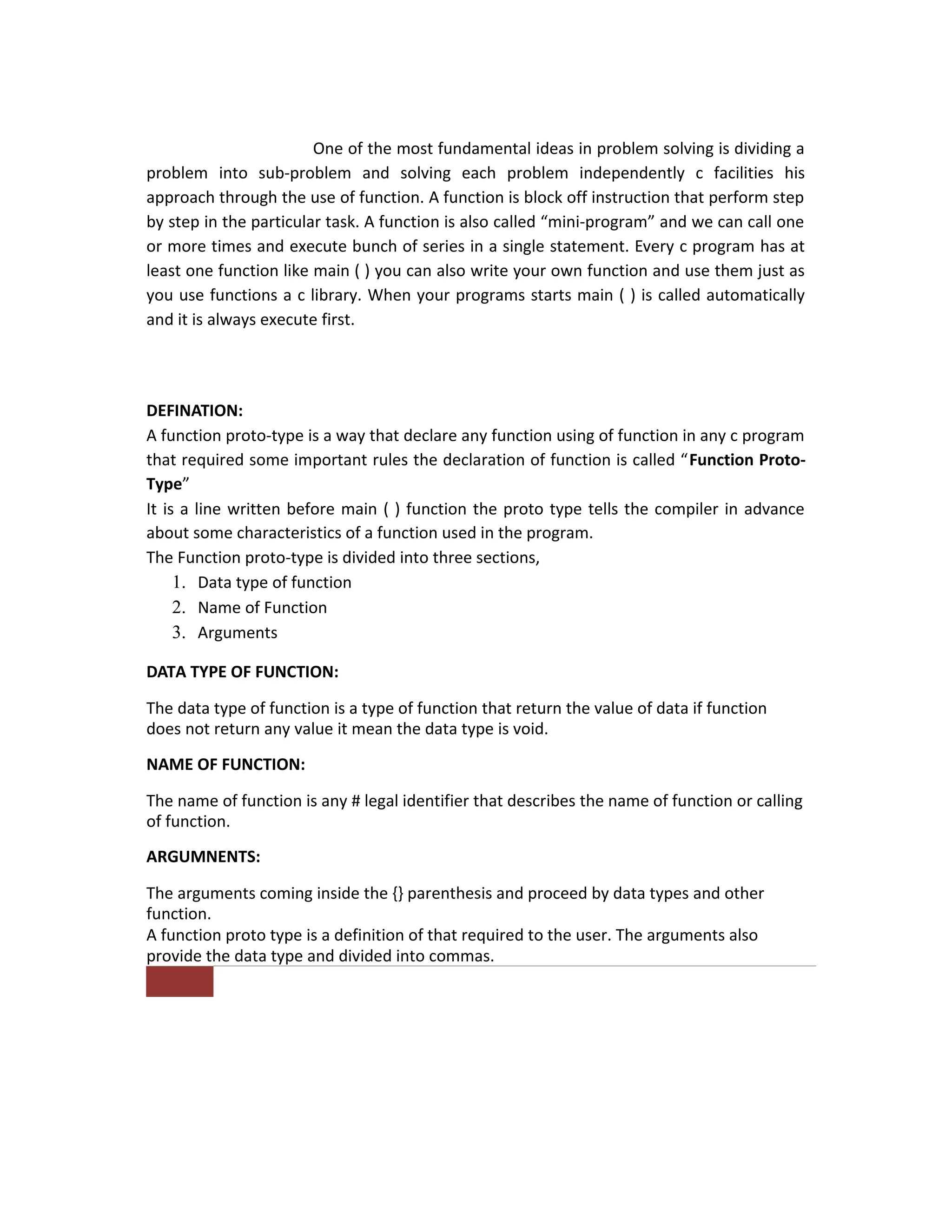

![INPUT AND OUTPUT FUNCTION:
There are many input & output functions use in c language but major
are Printf (), puts (), putchar (), scanf (), getche (), and gets ()
INPUT FUNCTION:
Scanf ( ) Function:
The scanf abbreviates as “Scan formatted input function”. This function is found in
<stdio.h> library. The scanf function is used to store the values during the execution of
program.
SYENTEX: scanf (“ %d ” , &a);
EXAMPLE:
Int a;
Printf (“Enter
No”); Scanf (“%d”,
&a); Clrscr();
Printf(“No is %d”,a);
Gets( ) Function:
The gets abbreviates as “Get String”. The get string is found in <string.h> library. The get
string function is simply responsible to store string type of data. A string is a collection of
character and character may be #, @, &, $ a to z, 0 to 9, A to Z so that’s why we cannot
use arithmetic operator in the string. The gets( ) function allows to store spaces during the
execution it mean we can write any name with spaces like ‘Yasir Khan’
SYNTEX: gets(variables);
EXAMPLE:
#include<string.h>
Char a[30];
Printf(“Enter Your Name:
“); Gets(a);
Printf(“Your name is %s “,a);](https://image.slidesharecdn.com/munirmahar-161210184954/75/over-all-view-programming-to-computer-17-2048.jpg)
